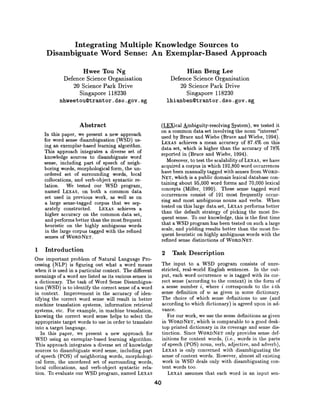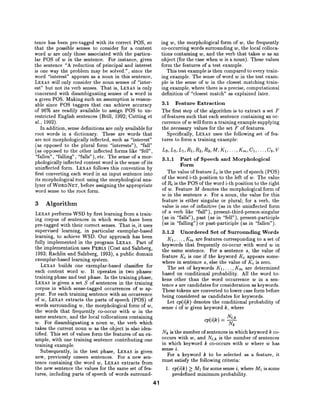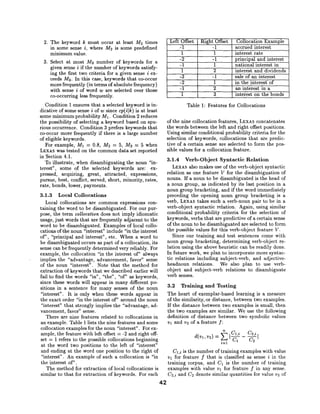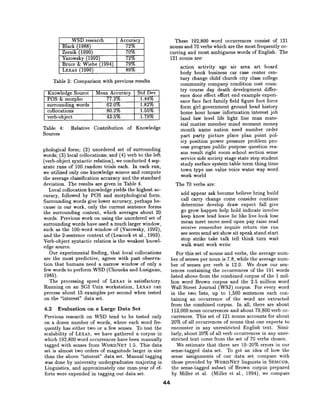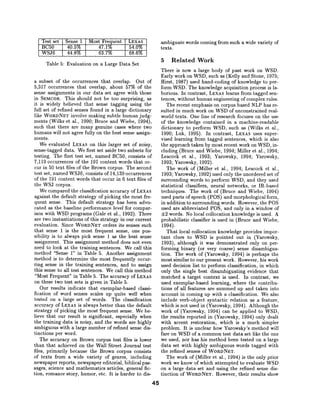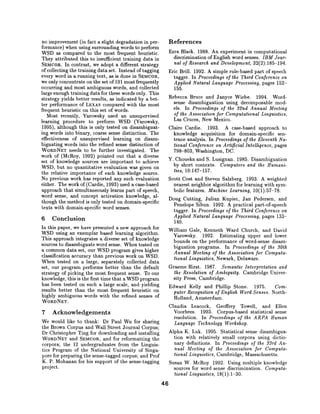This paper presents a new exemplar-based approach for word sense disambiguation (WSD) that integrates multiple knowledge sources. The authors' WSD system, called LEXAS, was tested on two datasets. On a common dataset involving the noun "interest", LEXAS achieved 87.4% accuracy, higher than previous work. LEXAS was also tested on a large dataset of 192,800 sense-tagged words, performing better than the most frequent sense heuristic on highly ambiguous words. This represents the largest test of a WSD system to date.
